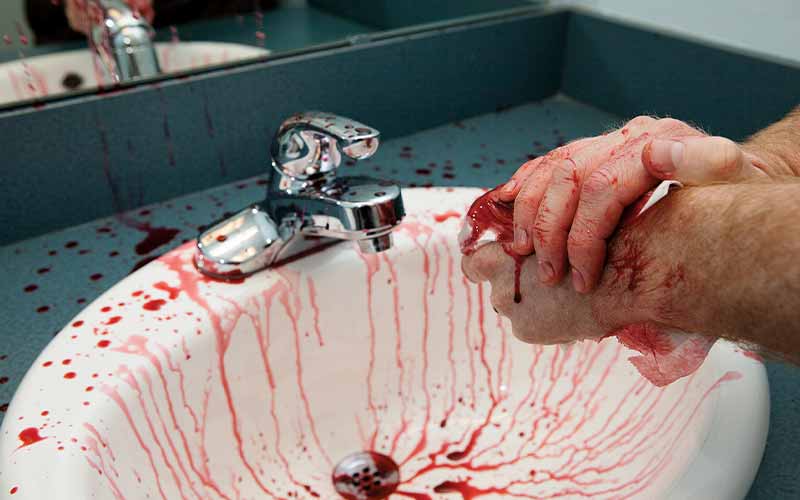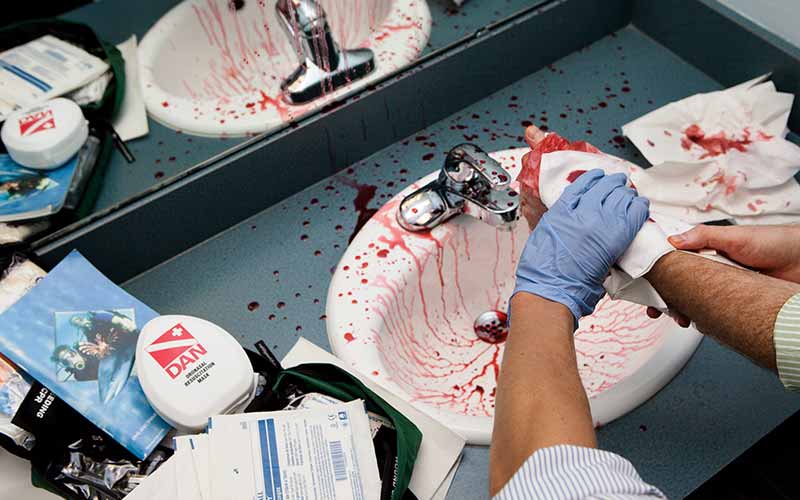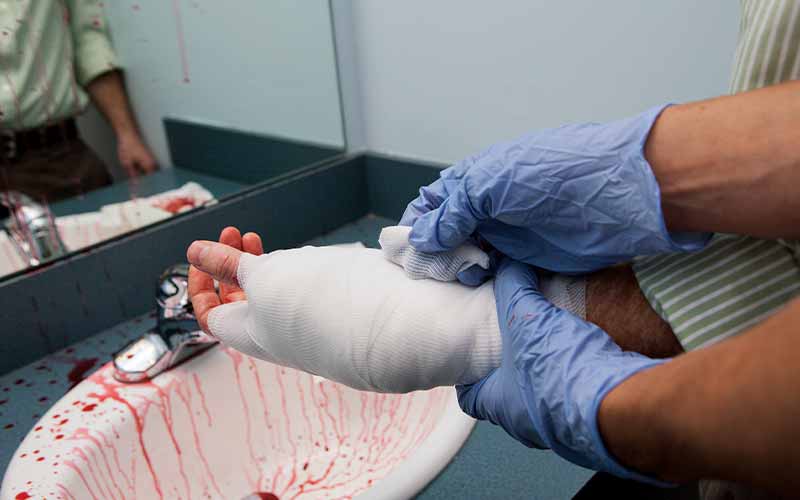My good friend, Bill, and I were attending the Beneath the Sea dive show in Secaucus, N.J., this past spring. It had been an enjoyable show; we checked out the new equipment on display and attended a few seminars, including an excellent one on the treatment of decompression illness (DCI) by Dr. Nick Bird, DAN’s chief medical officer. We also had been helping our friend Thomas Hurtado, the general manager of Scuba Cancun, at his booth, which was right across from DAN’s.
Bill is an experienced emergency medical technician (EMT) in New Jersey, and I am an EMT in Maryland. Bill and I are dive buddies, and we have done volunteer dive-rescue work as support crew at American Power Boat Association hydroplane races. Both of us have taken DAN’s dive medical technician (DMT) course and are DAN® Instructors. We’re firm believers in furthering our own education in dive medicine as well as helping to promote dive safety by teaching; every diver who gets first-aid training strengthens the network of safe diving.
After the show ended we were helping some folks break down their booths and chatting with our friends at DAN. Suddenly a young lady ran up and asked frantically, “Is there an EMT here?” I immediately told her I was one, and she said, “A man cut himself while taking down his booth, and he is spurting blood all over the men’s bathroom.”
Her description of the injury seemed to indicate an arterial bleed; the risk with such a bleed is shock, a true emergency in which substantial fluid or blood loss results in insufficient blood to supply the body. Unchecked, an arterial bleed can lead to loss of consciousness and death from shock in a matter of minutes. These thoughts were racing through my mind as she spoke.
She took off through the convention center with me right behind her. I tapped Bill on the arm on the way past him and said, “Come on!” We headed across the show floor while Patty Seery, DAN’s deputy director of education, hurried to grab a medical kit that had not yet been packed away. As we made our way across the convention center I asked if an ambulance had been called, and the woman responded that one had. She said when people saw the severity of the injury they had immediately blurted out, “Go get DAN!”

After quickly covering the length of the convention center, Bill and I entered the bathroom and took in the scene. The injured man was standing at the sink with his hand wrapped in wet paper towels. He had indeed been spurting blood, as indicated by spatters on the sink and walls. Although the amount of blood was substantial, it did not appear to be life threatening. He was alert and applying direct pressure to the wound. We walked up, identified ourselves and asked the man how he was feeling and if we could help. The bleeding was reasonably well controlled, but the paper towels he was holding on the wound were soaked through. His skin color was good, he was alert, and he denied feeling dizzy or lightheaded. As with many accidents, much was evident from the initial assessment we did as we arrived on the scene. We got an idea of the amount of blood lost, noted the types of marks made by the blood (spatters as opposed to drops), saw the bleeding was well controlled, observed the man’s skin color and quickly confirmed an adequate level of consciousness and alertness.
Patty arrived with the first-aid equipment, and we all put gloves on. Bill and I helped keep the hand elevated and maintained direct pressure on the wound. Brad, another friend of ours, helped Patty move the dressings so we could bandage the wound. While they were assembling the supplies, we assessed the injured man’s fingers for function and feeling. After we had collected dry dressings, we removed the paper towels to reveal an impressive five-inch gash in the man’s hand. As we began to remove the old dressing, a man that had been standing next to us asked if he could see the wound before we covered it up again. He told us he was a surgeon but that we were doing a fine job and should carry on. He advised the injured man that a trip to the emergency room was the best course of action.

We applied fresh gauze pads to the wound and then wrapped the arm with bandages to secure the gauze. We did this while continuing to hold direct pressure and making sure the wound stayed elevated. In the course of our assessment and treatment, we discovered that the man had been using a dive knife to cut wraps that held his booth together and the knife had slipped. The ambulance crew arrived shortly after we had completed the bandaging, and they took the man to the emergency room.
Although we were at a dive show, this was an injury that could have happened anywhere. But whether it occurred on a dive boat, in a convention center, on a beach or at home, the treatment would be the same. This incident really showed me the importance of the first-aid skills taught in the DAN’s Basic Life Support: CPR and First Aid class. It also demonstrated the importance of having the proper medical equipment, such as a first-aid kit, readily available. It is just as important to be prepared in our daily lives as it is at the dive site.

I was very proud to hear that when there was an emergency, the first words out of the mouths of the divers present were “Go get DAN!” That speaks volumes about the job the folks at DAN have done in promoting safety in the diving community through education and training. I am proud to be a DAN Instructor and part of a network of divers trained in first aid, able to help out wherever a need arises.
© Alert Diver — Q3 Summer 2012